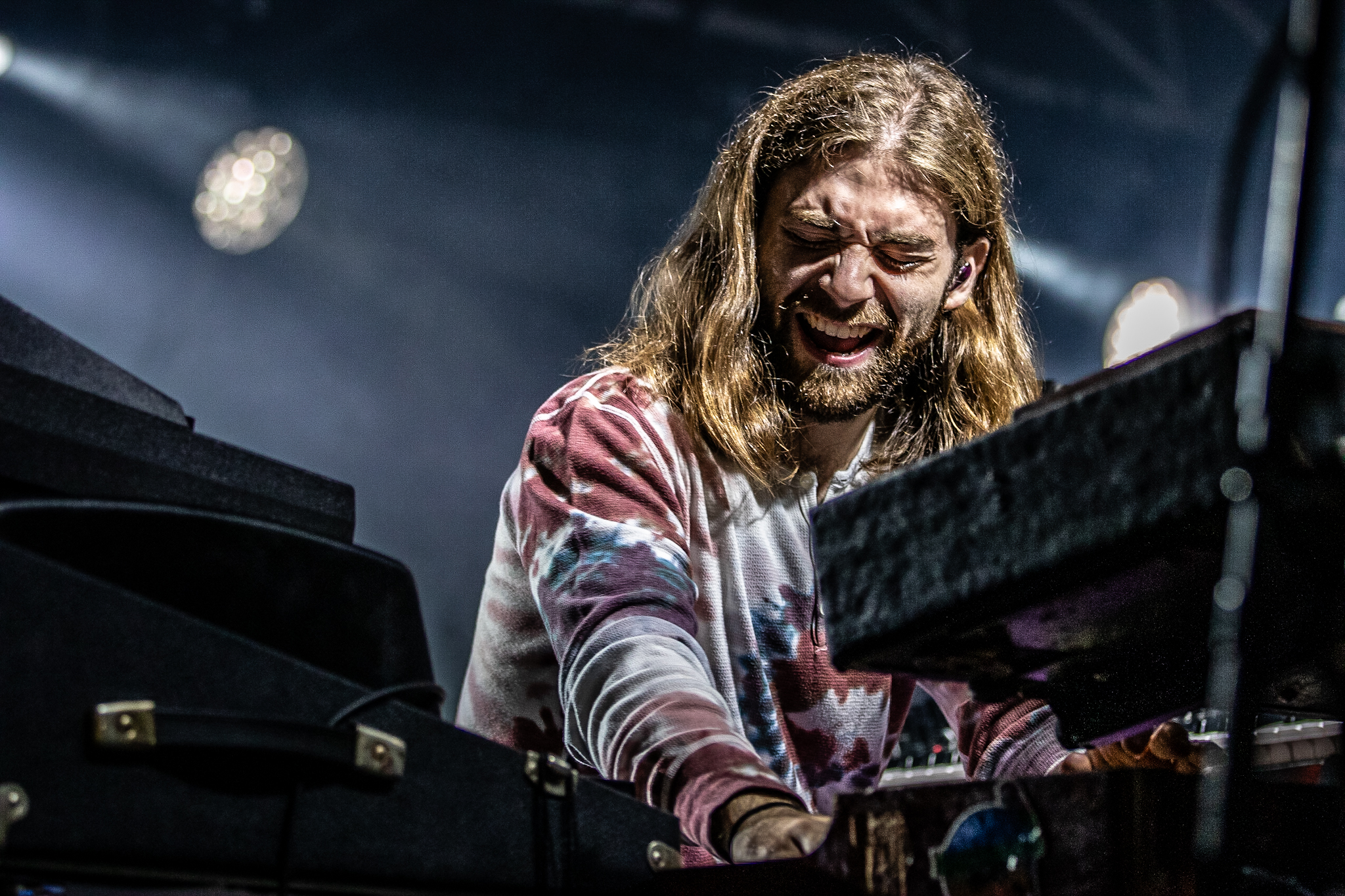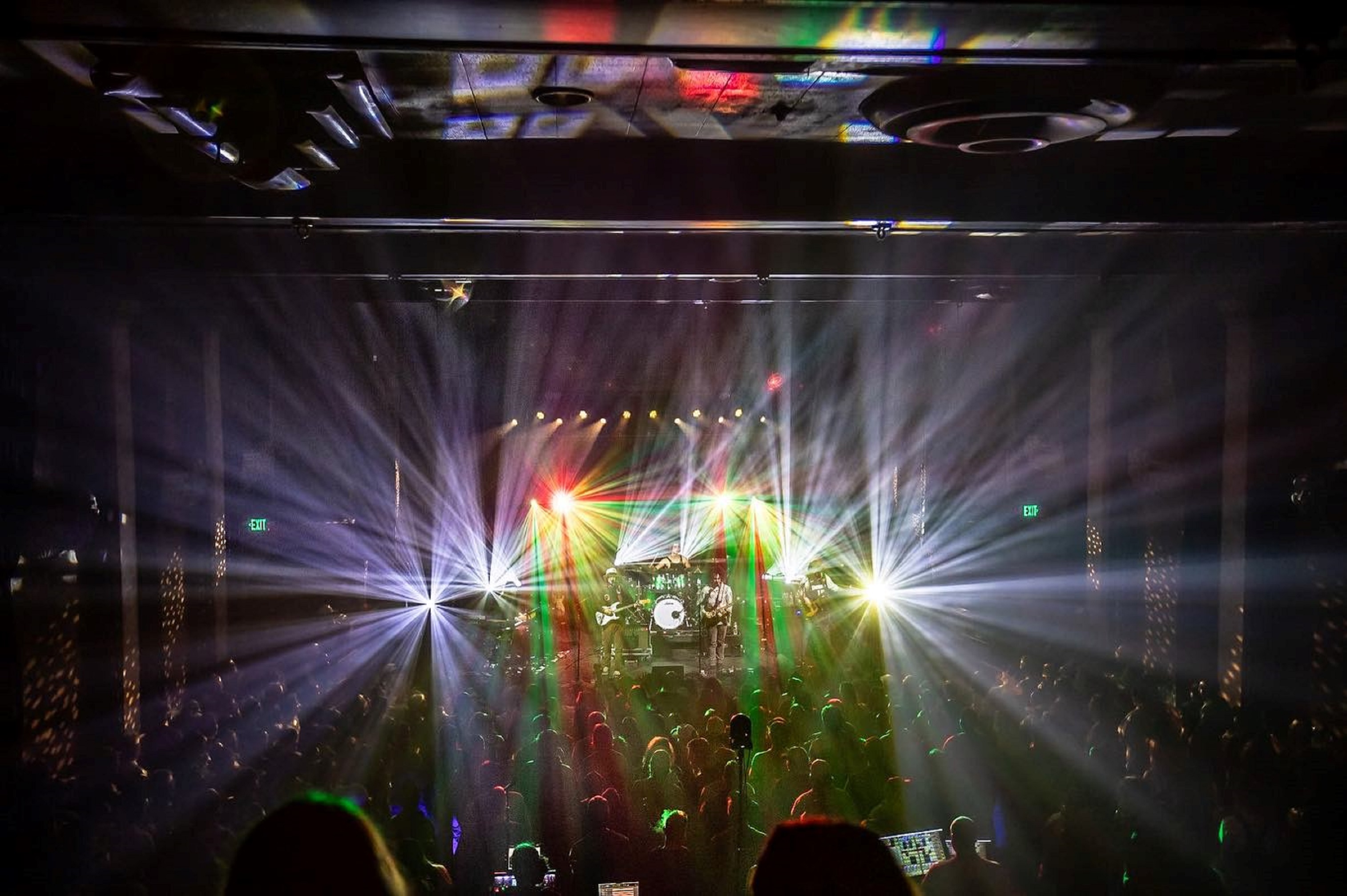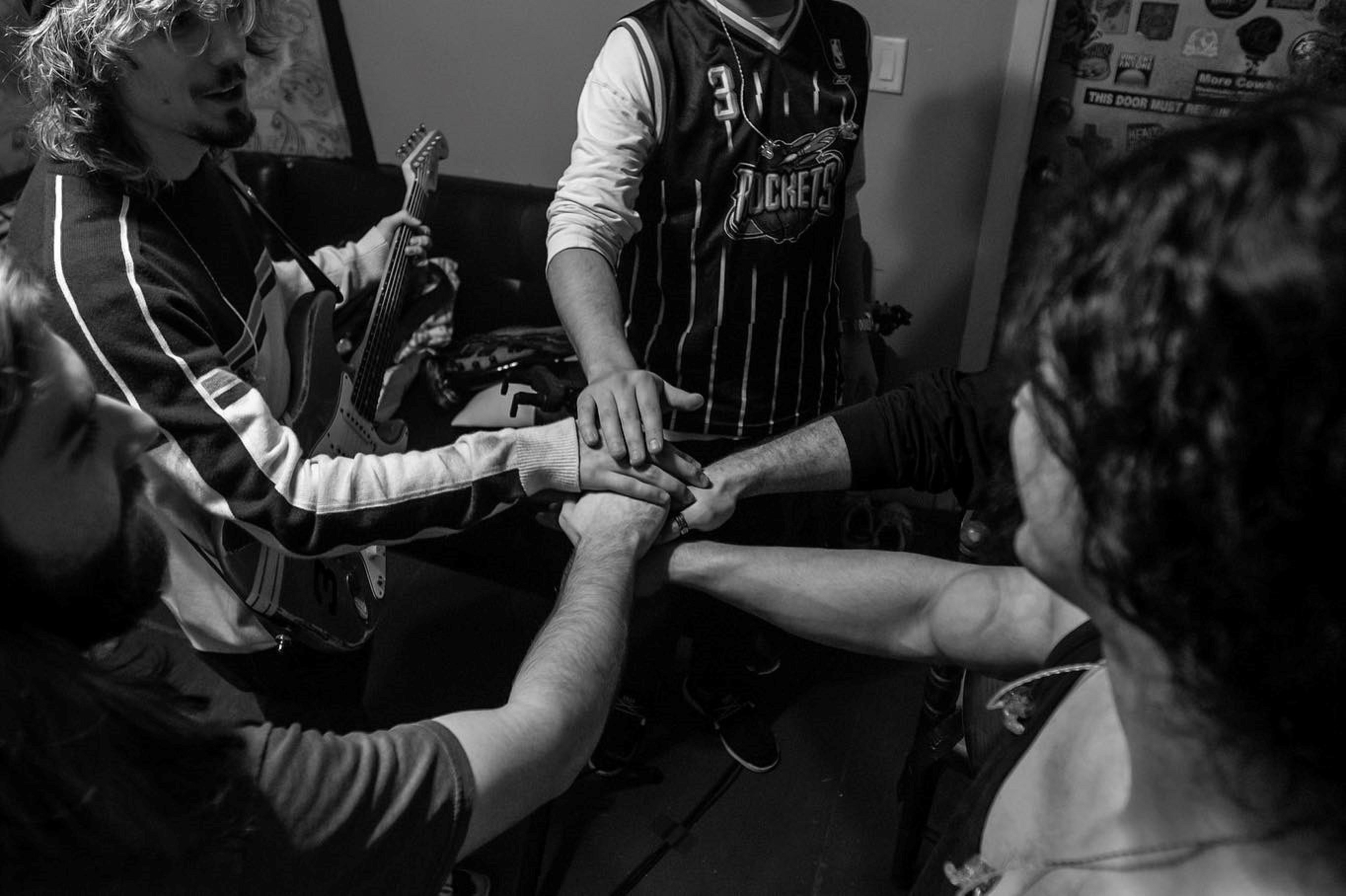In this insightful interview, Jeremy Kaplan, the talented keyboardist from Dogs In A Pile, shares his remarkable journey from a high school student supported by Billy Joel's generous foundation, to a flourishing musician intertwined with Joel's legacy. Kaplan's connection to Joel extends beyond a mere meeting; it's a narrative of inspiration, opportunity, and the transformative power of music. From his formative years at Long Island High School for the Arts to the establishment of his band, Kaplan's path is a testament to the impact of mentorship and support in the arts. His reflections on meeting Joel, the influence of piano legends, and his evolution as a musician offer a glimpse into the life of a passionate artist navigating the complexities of creativity and collaboration. As Kaplan and Dogs In A Pile continue to captivate audiences with their dynamic performances, his story stands as a beacon for aspiring musicians everywhere, highlighting the importance of community, perseverance, and the enduring legacy of musical icons like Billy Joel.
Grateful Web: Tell us about your connection to legendary pianist Billy Joel. Have you met him?
Jeremy Kaplan: I did meet him once. I went to this art school on Long Island called Long Island High School for the Arts, aptly named. The school was desperately underfunded as most arts programs are and it was about to flop. The Joel Foundation came in and donated enough money to keep the school running.
That resulted in a series of publicity events with Billy Joel, his foundation, and my school. There was a program at the Tilles Center with a Q&A with him. He's done plenty of college lecture talks that you can find on YouTube which are all great. It was that kind of format where he would play a tune, people would ask questions, and it would be an open forum with him – which was really cool.
I wasn't initially going to go to college. I had already started working as a musician. I was doing a lot of musical theater stuff, musical direction, playing in bands – all sorts of junk. I wasn't going to apply for any kind of secondary education, but eventually my story – or whatever of it existed at that point – was run up the flagpole to his business manager and then to Billy Joel. It was pushed that they give me a scholarship so I can go to school and it turned out to be very fortuitous because that's where I met Brian [Murray] and Sam [Lucid]. From there, we put together the group.
GW: What do you think about your story or playing style stuck out to Mr. Joel?
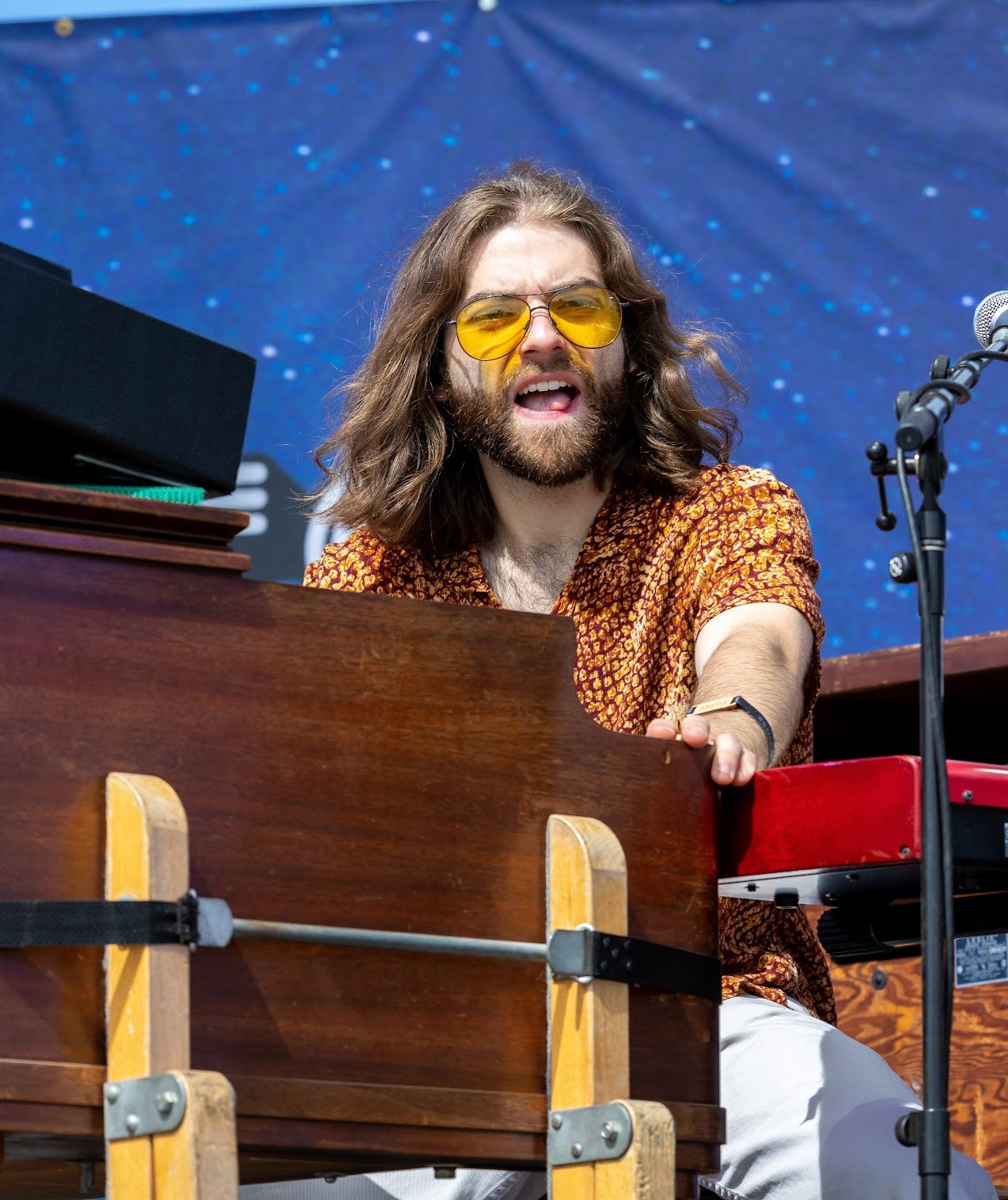
Jeremy Kaplan: I think it was mostly a “piano player from Long Island” type deal. That's what really did it. I did have aspirations to do essentially all the same stuff that he's been doing for the last 40-50 years. Putting out records, playing shows, and writing music.
GW: Are you excited for his new single that recently came out?
Jeremy Kaplan: Yes! It’s funny I was recently in a thrift store on Long Island and there were two Billy Joel CDs for sale. His first album called Cold Spring Harbor and his second to last album River of Dreams. I had never listened to either one. So, I bought them. I had a long drive back to Jersey and listened to both. Man, Cold Spring Harbor is a f****** beast of a record. And River of Dreams is great too. There's a bunch of cuts on there that I had never heard before. Both albums really stuck out to me.
GW: You met him in person at Madison Square Garden in 2017. Did he have any words of advice for you?
Jeremy Kaplan: It was pretty rapid, but he imparted advice and just talking with him was the biggest learning experience. He was extremely affable and funny. It was overwhelming and I honestly don't remember much. It seemed like it was up and over in a minute. It's crazy.
GW: Why did you choose to play the piano?
Jeremy Kaplan: I didn’t, actually. I started on a drum set. It was the first instrument that I wanted to play. I got Rock Band for my 11th birthday and was playing the plastic drums. They had “YYZ” by Rush in there. I was playing that and thought: man, this is the s***. This is what I need to be doing. I would beat the crap out of those plastic drums every day until I could finally convince my parents to get me a real drum set.
Beyond that, it was just diving heavy into music as a whole. My grandparents had this Casio keyboard in their basement. I would go down there, put it on the organ setting, and mash the lowest keys to create this horrific rumble. That's how I started playing keyboards.
GW: Who initiates tempo changes in a live show?
Jeremy Kaplan: Part of the joy of being in an improvisational group is that anything can come from anywhere at any moment. As far as tempo changes, groove changes, key changes – these could all come from anybody's suggestion. I like that word “suggestion”. Have you ever tried to carry on a conversation with five people simultaneously?
GW: I do it every day.
Jeremy Kaplan: [laughs] So you know it’s extremely difficult. We can suggest that certain things happen in the context of conversation or a jam. That could come from anybody's piece.
GW: Where do improvisation and “practiced” songs meet in a live show?
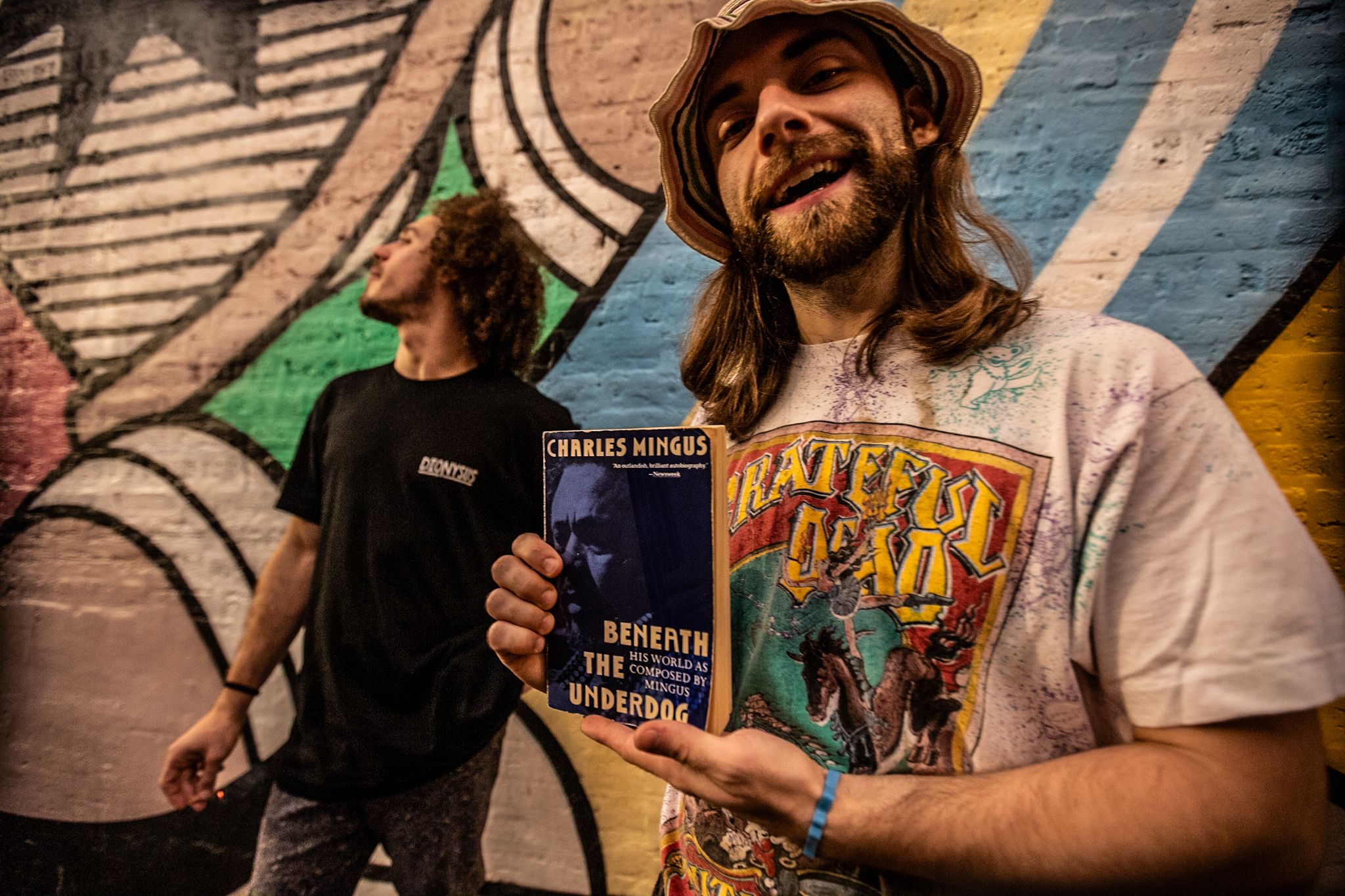
Jeremy Kaplan: If we pull back to think about jazz musicians – you have the tune. Which is built of a melody, chord changes, and some sort of rhythmic backing most of the time. Jazz musicians would take the skeleton of these popular songs – often Broadway-type theater tunes or Tin Pan Alley – and improvise on top of that. So that's not wide-open improvisation. I guess that's what you would call “type 1” jamming, where we stick to a form but can improvise on top of that form within a certain kind of framework.
As things got developed, we started building into the “type 2” jamming, which is some of the more “out” jazz stuff that you might hear. Later Miles [Davis] like Bitches Brew and things like that. Where they're abandoning the form of the music, listening to each other, bouncing ideas off each other, and reacting in real time. It could be any key, chord, melody or everybody's coming up with it all on the fly. There is a way to blur the lines between these two and if you have a great ensemble of players, then it doesn't matter what happens. You have the trust in the rest of the band to be able to take things out at any moment.
There's some amazing jazz recordings where this happens. They're plotting along playing the tune and it's easy to keep track of, but then it falls apart somehow. You don't know where beat one is. You don't know what key you’re in anymore. There's no hint of a melody from the original bit of the song, but they're all still together and somehow they find their way back into the “head” – the melody – and take the tune out.
GW: You mention jazz. Do you think you all consider yourselves jazz musicians first? In terms of the way you perform your improv on stage?
Jeremy Kaplan: I would say no. This is tough. I don't really know the definition of jazz. It's difficult to say what exactly it is. The definition in the 40s is different than what it was in the 60s, again in the 80s, and so on and so forth until now. You have things that are labeled as jazz that have very loose connections to what was going on in the 50s. So it's tough to say. I know all of us are interested in jazz, and that is the basis of improvisational Western music.
I wouldn't say that we're all jazz musicians because that's a very specific kind of person. The jazz musician is the one that you see at the jam session that knows all the standards, knows all the tunes, knows the hip tunes, the modern tunes. Stuff by Wayne Shorter and Roy Hargrove. All the newer cats. They know these tunes that are within the compendium. It's not really who any of us are, but we all love and practice it.
GW: What do you consider yourself?
Jeremy Kaplan: It's the constant self-discovery thing. Also, humans love labels and we love to compartmentalize so it's helpful in a lot of ways, but I like a lot of different things and so does everybody else in the group. One day it'll be Frank Zappa. One day it'll be Bill Evans. One day it'll be show tunes and everything else inside of that. I think that comes from my background of musical theater because almost every single genre of music is represented in it. You have the modern rap shows – your Hamilton and your In the Heights. You have the rock musicals – Little Shop [of Horrors] and Jesus Christ Superstar. You have the classics – Carousel and My Fair Lady.
Being in that world allows you to experience all these musical genres and beyond that – great writing in all these genres. So it's tough to say what I am, because I like all this stuff. It’s such a cop out to say: “oh I like all music”, but sometimes it's the best answer.
GW: I feel like as jam band musicians and fans, it's actually true when we say that. That's what jam is, right?
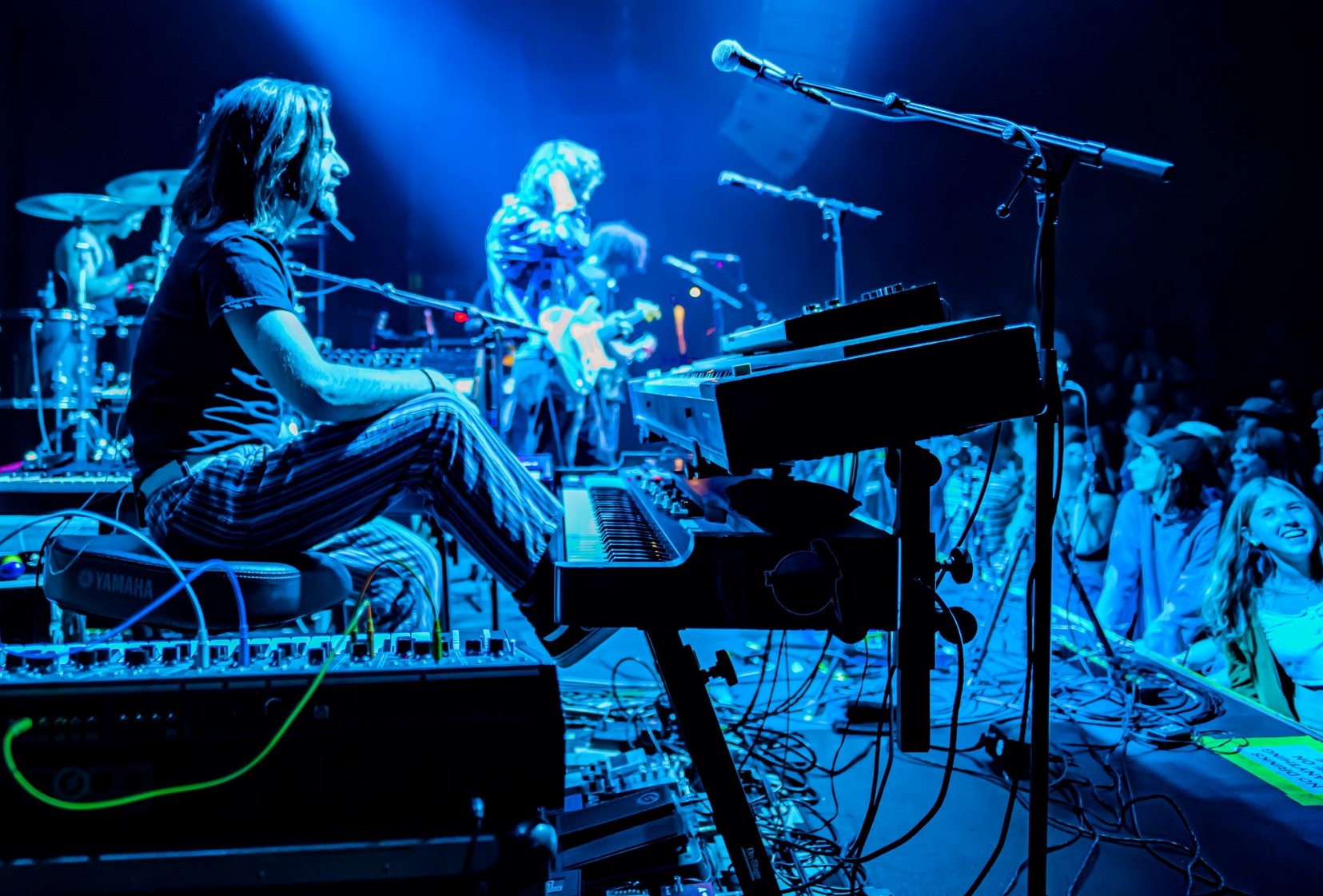
Jeremy Kaplan: Yeah, totally. Jam bands are the same thing. We could be in a reggae then metal groove and then who knows what happens next?
GW: Does the band debrief after shows to analyze what went well and what didn’t necessarily “work”?
Jeremy Kaplan: We've been up and down with this. You'll never get everybody on the same page as far as liking or disliking the show immediately after it happens. That's because there's too much emotion attached to it. We're too involved with the whole process top to bottom to be like: this one was good, this one was bad. Without taking yourself out of the moment and… review, as unbiased as possible. I've taken to pushing us to not talk about it and just be like: yes, that was a good show or sometimes that was a fine show, and just get off of it. Think about something else.
It can be unhealthy if you personally feel like you had a bad show or you didn't like something that somebody else was doing. It can eat at you. To harp on points like that and the emotionally vulnerable state you are in after a gig – it can be unhealthy.
GW: Do you think musicians, like athletes, go through hot streaks? So maybe one of you goes through a string of shows where you're just on fire and driving and elevating the other guys to be better?
Jeremy Kaplan: I think it could, but I don't know if it's necessarily like: I've just been tearing it up the past seven days and now I'm just doing whatever. I don't think it's quite so boxed in like that. Especially being in a temporal art form. Over time, there's so much that can happen and so much you can forget. It’s tough to say. Until you can go back, listen at a later date, and understand what the whole product was. What we're listening to in our in-ear monitors is so different from what the crowd will hear. It's almost impossible for any of us to tell.
GW: What do you hear in your ears?
Jeremy Kaplan: We all hear everything and everybody. We hear all the musicians on stage. That's the goal, but we have to make sure that we're hearing ourselves a little bit better than you would in the context of a whole mix. The idea of mix is that everything sits in its place and you can hear everything, but the important bits pop out when they're supposed to.
If I'm playing chords comping for a guitar solo, I don't need to hear the guitar solo above my quiet chordal playing. Then I won't be able to tell if I miss a note, if my timing is off, or my voicing is ugly. Whatever it could be. I have to make sure that I can still hear myself while that other instrument has the focus at the moment.
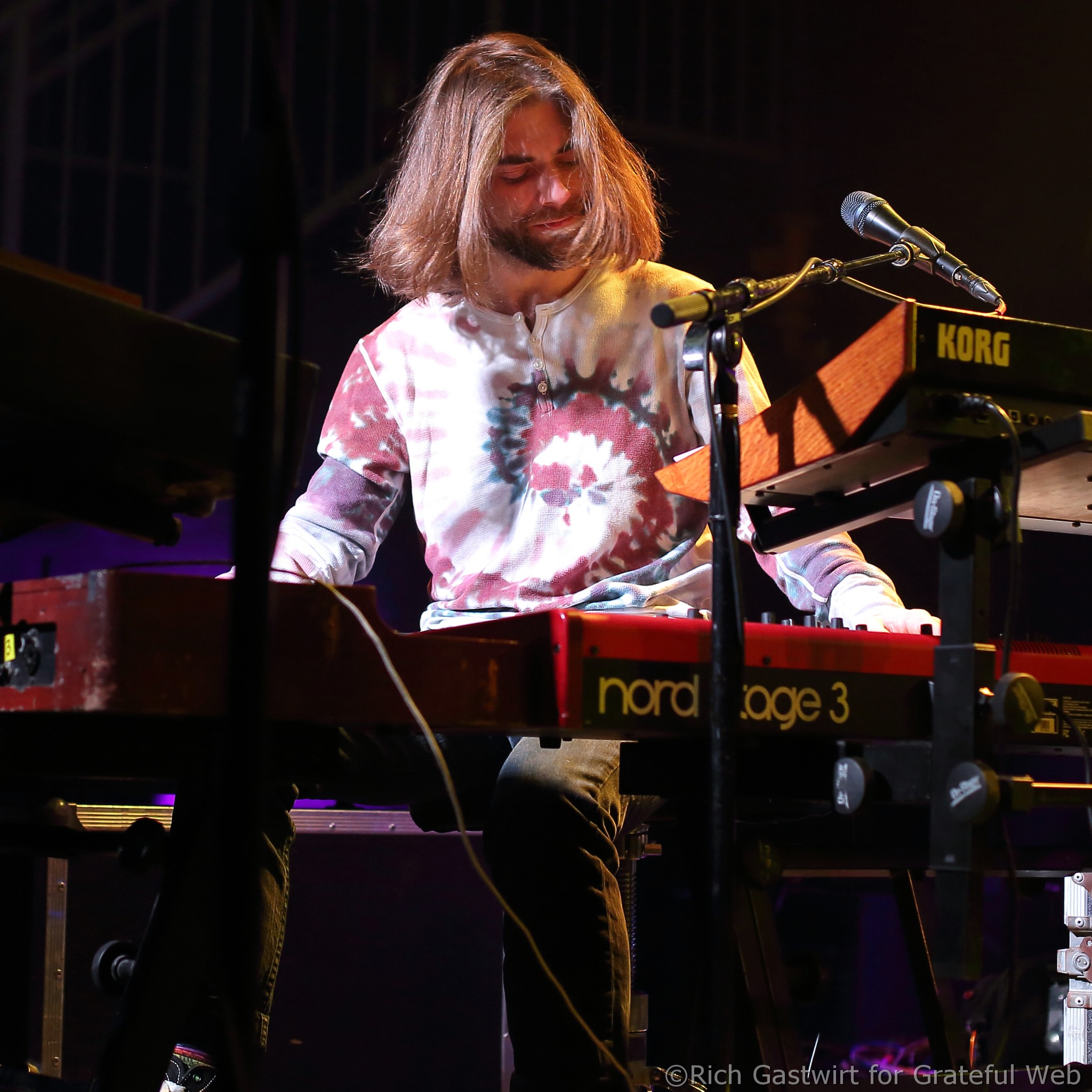
GW: Was it important for you to be in a band that you could sing in?
Jeremy Kaplan: Yes, so when I was talking about “voicing”. You have a chord, right? You can play that chord in many different ways. The way you play it is the “voicing”.
Regarding my singing though, I didn't get into singing at all until my first bar band, when I was maybe 15. I was just doing backups, and I could never hear myself on stage. I never knew if I was any good at it or not. I never worked at it. Until this band started going. Then I thought: I probably can sing. I just need to practice it.
Over the last couple years. It's been a lot of difficult conversations with myself in getting over the awkwardness of hearing your own voice. Everybody has the experience where they've listened back to their voice on a video or on an audio recording and they think: who the hell is that? That's the worst noise I've ever heard.
Beyond the physics of that, which is very interesting, the way sound resonates in your head. It's tough to listen back to yourself and pick apart a performance. To practice and be so inside of that is really ugly. It's necessary though and everybody can sing. Like anybody can play the piano, guitar, or drums. It's a matter of practice.
GW: I understand that you enjoy nerding out on tech. What's an essential piece of on stage equipment – that isn't an instrument – that you can't play without and why?
Jeremy Kaplan: The first big investment into the band's infrastructure as far as the stage is concerned was our in-ear monitoring rack. That has gone through many revisions to make it to where it is now, but that's arguably the most important thing that we have. It allows us to hear ourselves in a way that is conducive to what we need and to capture recordings. It's nice because it’s plugged in and set up for us every night. You just plug in all the bits and then the mixes are all set. It doesn't take a half hour out of soundcheck to go back and forth with a monitor engineer saying: I need more of this, less of that. It's all set up for us and we can do little tweaks from our phones. Which is crazy. We can dial in our mixes from any internet connected device. It's really really cool to be able to have that and it makes everything so much easier. Set up, tear down. It's amazing.
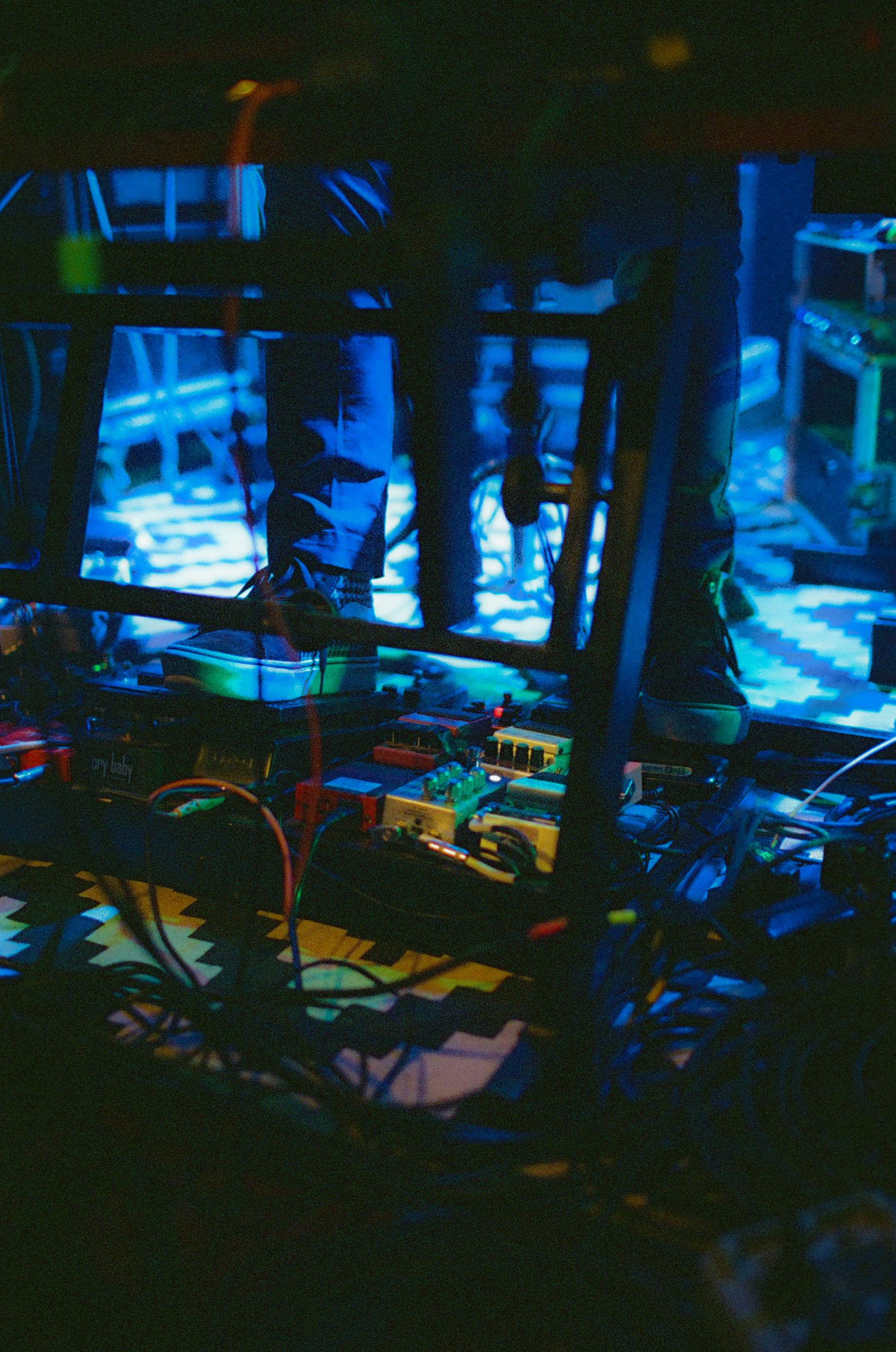
GW: I notice you use a lot of electronic and EDM type effects. Is this something that you're continuously learning about and mastering?
Jeremy Kaplan: Definitely. I do not come from an electronic dance world, but I've been exposed to it steadily my whole life just as anybody my age has. Also with Jim [Law] being really into bass music. It helps me hear a slightly hipper side of it than just the untzy club s***.
Hearing what people are doing with synthesizers is amazing. It always has been amazing. From the first time the big Moog modular was introduced. It's being able to create sound from nothing. From electronics, transistors, resistors, and capacitors. It's insane. You can create any kind of sound. Especially now with the digital technologies. You can appropriate any sound of the orchestra on a single keyboard.
Beyond that, creating new textures and timbres is exciting, engaging, and amazing. I've been adding synthesizers. The rig has been pretty much the same for two and a half to three years now, but the synthesizers have been piling on.
GW: I've noticed!
Jeremy Kaplan: I just got another one, which I've been playing with. As far as I can tell, it’s the first real advancement in keyboard technology in a long time apart from adding electronics to a keyboard and making an electronic instrument like that. This is the first time the actual playing of the keyboard has been altered in hundreds of years. [pauses though he wants to talk about something *very* nerdy, but is resisting]
GW: Do you want to expand on that or…?
Jeremy Kaplan: Yeah, sure. I mean I find it so interesting and cool.
There's this keyboard called Osmose by the company Expressive E. This thing just came out about a year ago. I picked one up at the beginning of January and it's one of the most amazing keyboard instruments ever. It's got so many degrees of expression. You think of a piano: you hit the key. It's like an on/off switch in a way. You hit the key, the note rings. You lift off the key, the note stops more or less. You have dynamic range in that. Loud and soft. That's more or less how it works.
The keys in the Osmose have side-to-side action, so you can wiggle the key and produce vibrato or any other effect that you want. You can push the key down until it stops and then push it down further for another effect. Most of the time it has something to do with the filter or another pitch-type deal. It also recognizes the difference between a tap and a slow press on a key. You can swell into a note or get a percussive attack. It does many other things, but these are the bigger revolutions in the way that keyboards are made. I don't suspect that every keyboard is going to have this technology. However, it's going to be super valuable for synthesizers and expressive playing.
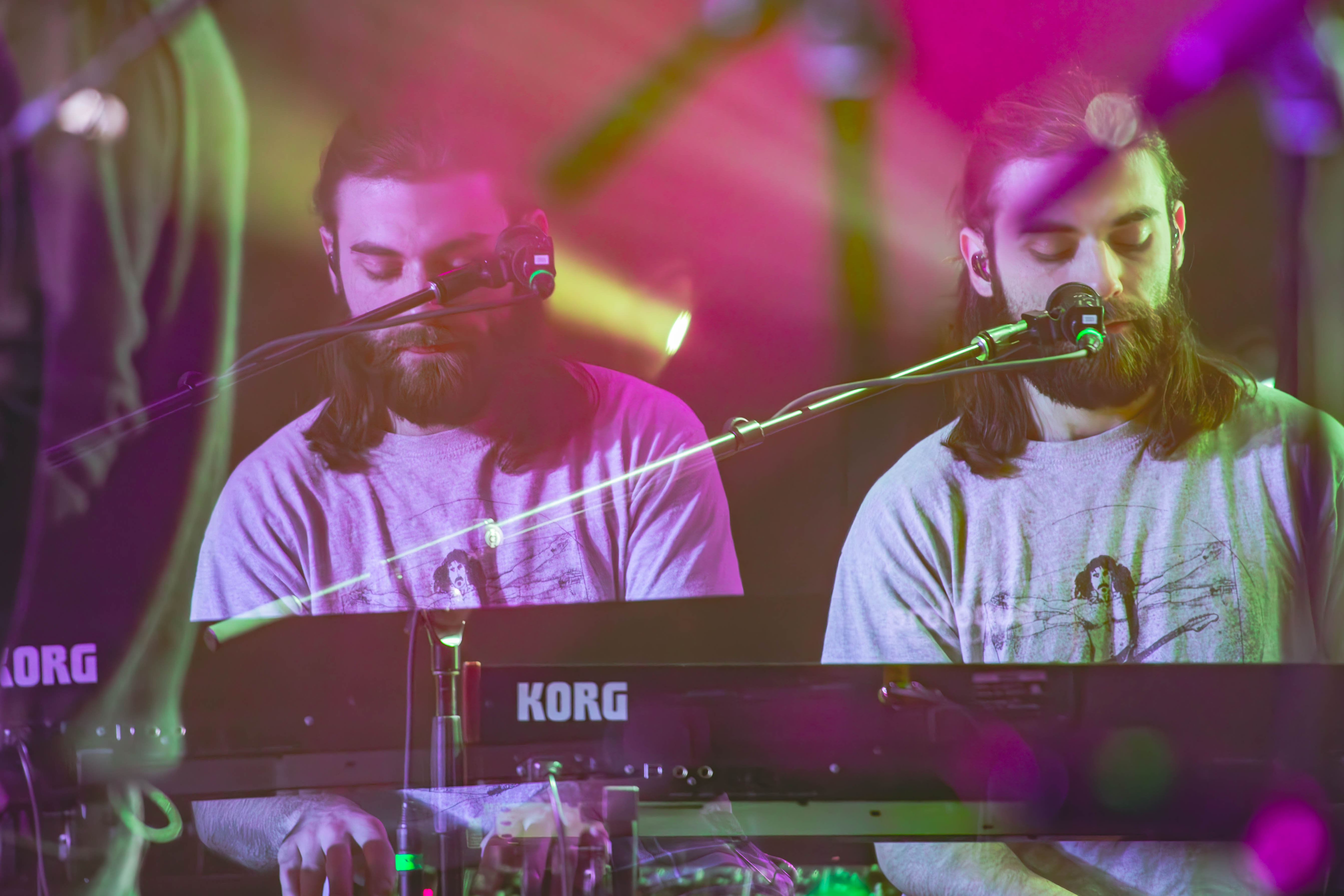
GW: That’s cool. I'm glad I asked you to expand on that!
Jeremy Kaplan: Very f****** cool. I’m hoping to bring it out as soon as possible. Just have to find a nice case for it. [laughs]
GW: Do you have any particular influences from the electronic synth-driven world?
Jeremy Kaplan: The cats that Jim [Law] turned me on to like Jade Cicada and Tipper. Cicada uses jazzier chords with extensions on them. Complicated dense chords.
GW: Would you ever play classical music? Do you have any pianist heroes from the 19th century?
Jeremy Kaplan: My engagement in classical music is different from most piano players. Most come up in a classical world. They start at a young age. Playing Beethoven and Mozart. I never heavily dug into classical piano music. I’m familiar with the Rachmaninoff Piano Concerto, a bunch of Beethoven sonatas, [Claude] Debussy, and [Maurice] Ravel. All sorts of really nice stuff. The thing inside of the classical music world that got me was [Igor] Stravinsky. He’s an early 20th Century composer.
I'm not that familiar with any piano pieces he has, but his orchestral work is amazing. There's this one piece called The Rite of Spring, which is my favorite by him. It was so insane to the people at the time. I think 1913 is when it premiered in Paris. There was a riot apparently. It's a crazy piece of music and a ballet as well. In fact, it's so amazing that John Williams clipped a section of it note-for-note orchestration-for-orchestration and put it into “Star Wars”. It's precisely the same.
GW: From causing riots to being in one of the biggest movies of all-time. That's awesome.
Jeremy Kaplan: Yeah!
GW: Do you find yourself listening to any one member of the band to drive your on-stage decisions? Does it differ night by night?
Jeremy Kaplan: I would say that I try to listen to everybody equally. I often hold myself back because we have five people on stage. There's so many ideas happening at any given time that I like to sit back and see where things go. Then it's all about waiting for your moment. You wait, you listen. There's a gap here. I can fill that. And you're in.
Now you're really contributing to the larger piece as opposed to: I'm here playing the piano and there're also some other musicians around. It's more of the communal building of a whole thing. Joe [Babick] and I have a strong musical connection. We always line up on hits and there's a moment in DC where I remember distinctly we were playing and Jimmy was taking a solo. It comes out of nowhere, but we hit this rhythm together. We didn't talk about it beforehand and I don't know how we ended up playing it perfectly at the same moment. There's something in the air between the two of us or perhaps the whole band on stage that said this is what needs to happen here. We hit it and gave each other that look like: ah motherf*****!
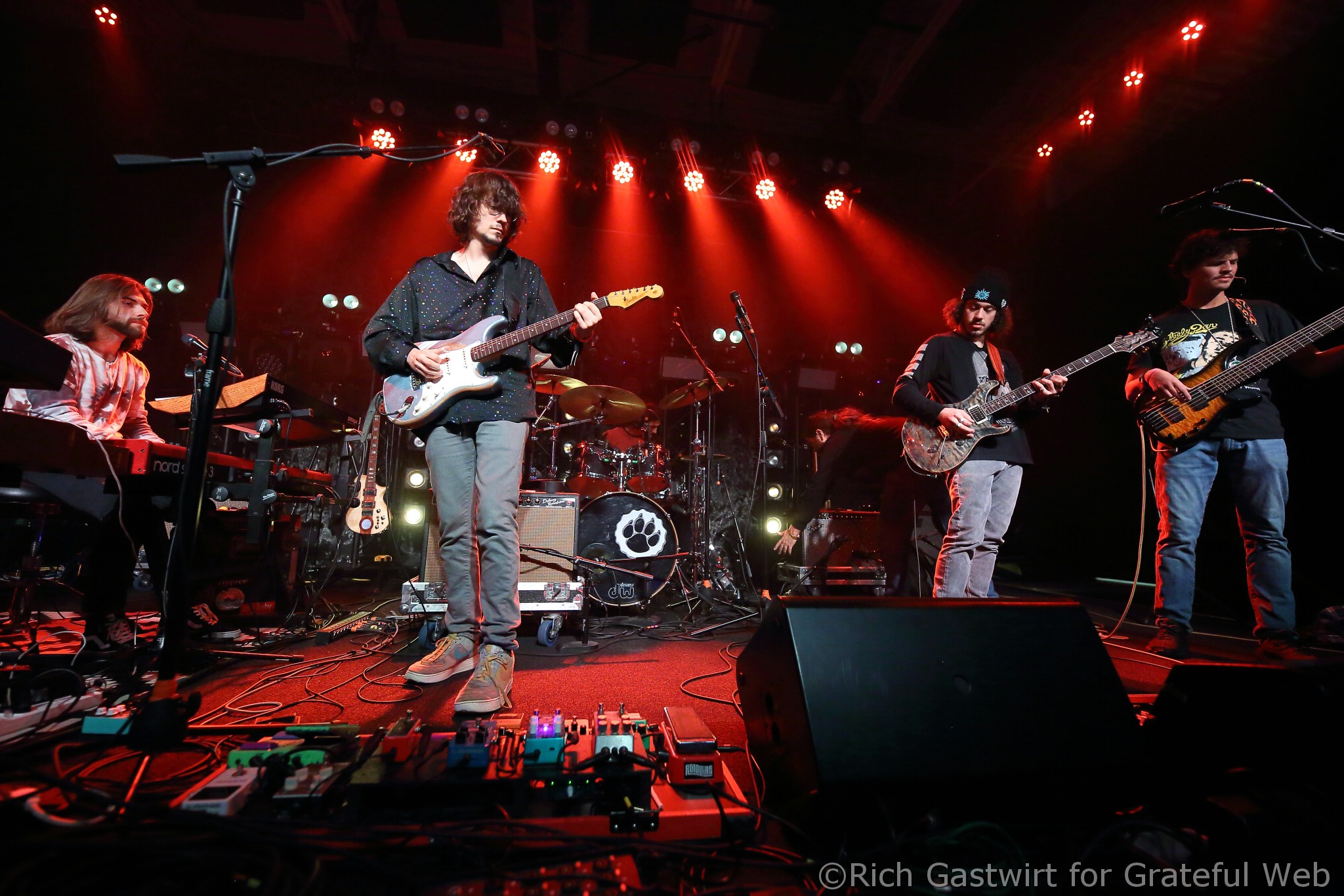
GW: The Dogs have been noticeably increasing their sit-ins with other musicians, whether it be the openers at shows or festival slots with other bands that share the bill. How do sit-ins happen and how difficult is it to connect with a group of players that you haven’t practiced with?
Jeremy Kaplan: They can happen one of two ways: the first way is a musician meets a musician, they become friendly, and then they kiss. Then you have lovely music. [laughs] The second is your manager tells you “you should have this person sit-in”. Then it’s a little awkward, but most of the time it's not an issue. Musicians are cool people and we're all down to play with whoever whenever. It always ends up feeling natural. Musicians are in their element with an instrument or a microphone in their hand. It's a lot easier to put together than you might think on the interpersonal side. There are so many musicians that I've played with that I still haven't spoken a single word to. That's because the musical connection transcends any sort of emotional or physical thing that could be happening.
The reason we've been able to do it more frequently is because we've been going around with a sound engineer who is able to help us put together the logistics to get that going through the speakers.
GW: In late 2022, you played in a Phish Fall ‘97 tribute show at Ardmore Music Hall. Talk to me about that experience and some of your standout moments of the night.
Jeremy Kaplan: I had a great time. It was great to play with all those cats. Adrian Tramontano, Chris DeAngelis, and Cal Kehoe – all of whom I've gotten to play with a number of times now. Great people and musicians. Everybody's undeniably a pro in that group and we all came in knowing the material. We had a ton of fun for a couple hours and it was easy to put together. That was one of the first times I met [Phish lyricist] Tom Marshall. It was great to be able to hang and chat with him for a little while. Great conversations in the green room with him and the whole band. There were a bunch of horn players that came in too. Top to bottom it was an awesome evening.
GW: You seem to tease a lot of songs in your playing. How do you know so many songs? Do you have a photographic memory?
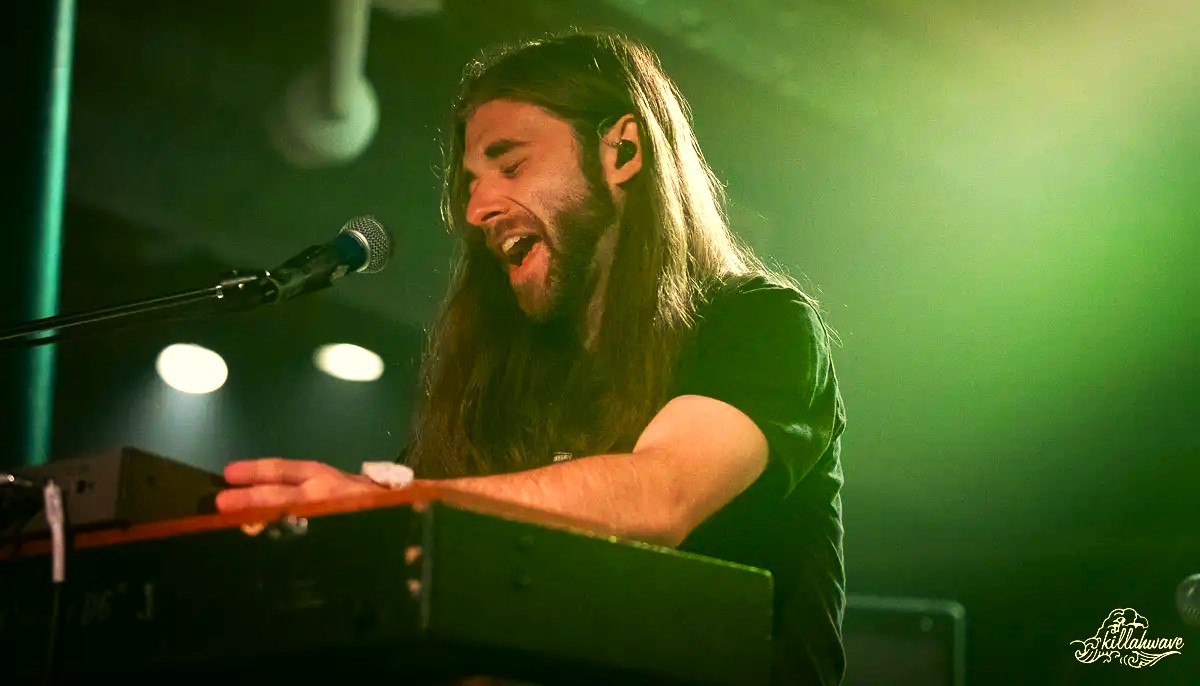
Jeremy Kaplan: [laughs] If you're realizing that I tease a lot of tunes, then the amount of tunes that you think I tease is half of what I'm actually doing – which is my favorite part about teasing stuff. I prefer the term “quote”. Tunes have melodies and you can quote a melody just like you can quote somebody's writing. So, I prefer that term.
They could mean different things. A quote, to me, is one person hints at this kind of tune perhaps in a roundabout way so you don't immediately realize that's what they're doing. A tease is more like the whole band is getting into a groove and a statement that reflects something pretty accurately.
I'm quoting stuff all the time because that's how my brain works. I happen to know a lot of songs. I don't think I have a photographic memory, but I have a damn good musical memory. When I first started playing, I learned to play mostly self-taught. The first five or so years that I was playing, I was really on my own and learning tunes. That's how I started to develop my library. They just happen.
GW: The DIAP original “EDM Song” blended into “Let U Go”. Now, the “EDM Song” part of “Let U Go” seems to be one of the higher-octane moments at a Dogs show. How did the songs melt together?
Jeremy Kaplan: You have “Bubble”, right? That exists for two and a half years. We came up with the ending of “Bubble” when we were recording the first album because we used to use a piece of the song “Spain” by Chick Corea as the ending. Then we said: okay, this is bull****. We have to figure out a real ending.
So, I kind of came up with that little bit. We were jamming on the groove in B and I started playing what is now the traditional ending of “Bubble”. Then Sam writes “EDM song” on its own. We were all feeling that it was great, but weren’t sure what we were going to do with it. It felt a little weird like we couldn’t drop into it out of nowhere. We decided it's in B minor and we could plug it into “Bubble”. Perfect. That's what we did and how it existed for a long time after that.
Then, Sam says: no I'm not done yet. He shows us “Let U Go”. He said he was also thinking about putting “EDM Song'' in there. He said we'd have to change the key, but it was totally the right vibe. He was right and that's how it goes. It's perfect for the moment in that tune. It lends itself to the rest of the tune. The feeling and poppy aspect of it.
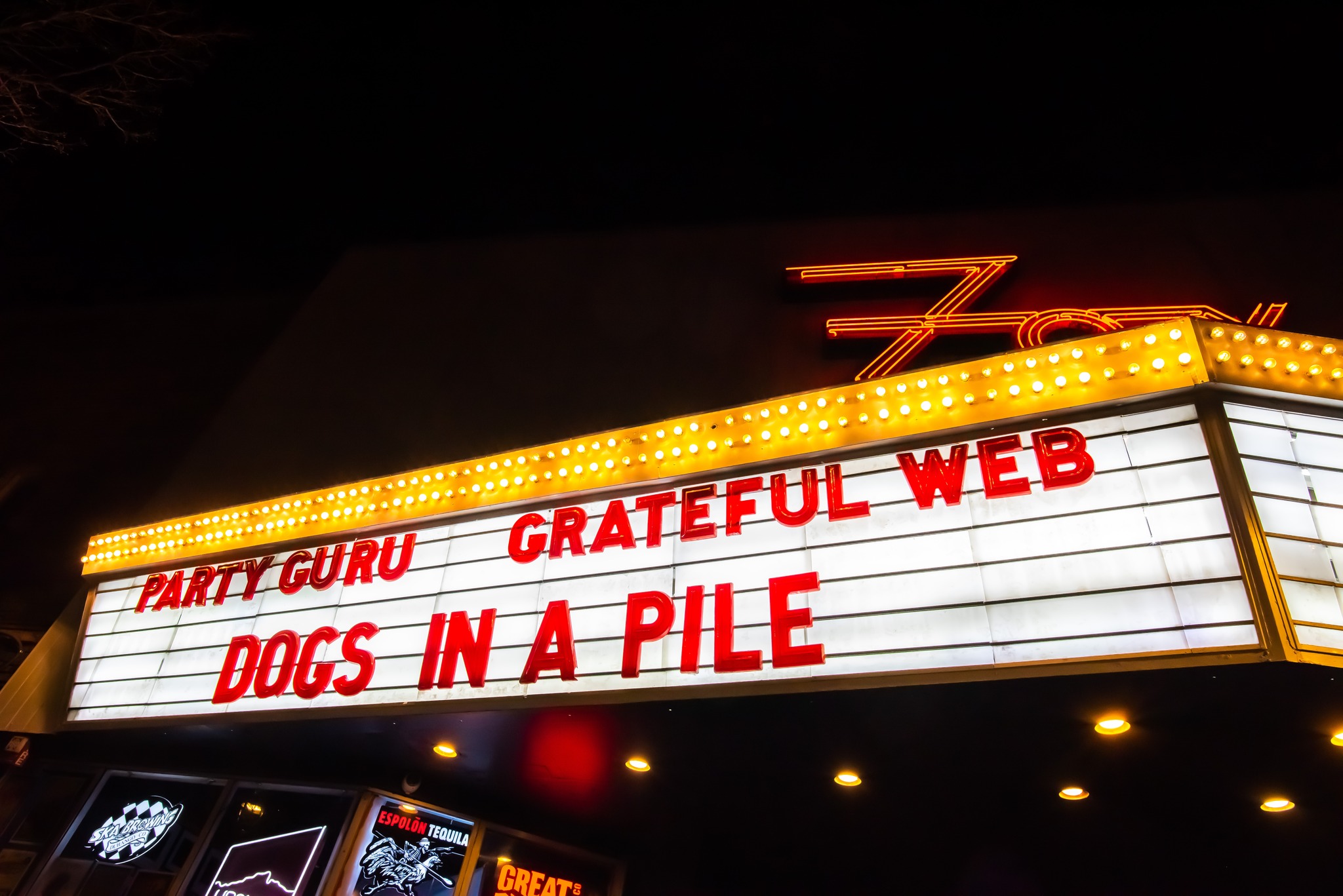
GW: If someone asked you to play one song to show off what makes Dogs In A Pile unique, what would it be?
Jeremy Kaplan: I like that question because the idea is that the preface you have to give when you show them the one song is: this is a band that can do many different things. They can do all sorts of styles and musical beats.
For my money, it's something musically invigorating. I don't want to say all over the place, but interesting over time in that it'll evolve and different things will happen. Something like a “Samba for Sam”. Where there's all sorts of musical and theatrical nonsense happening. Quiet and loud moments. Different grooves.
GW: You make a ton of eye contact with the crowd during shows. What are you looking at? And why are you so intensely staring at me?
Jeremy Kaplan: It's the only way I can assert my dominance. [laughs] That's why people know I'm for real. No, I don't know. I can't control myself when I'm back there. It's overstimulating. There's a lot going on. I don't know what I'm looking at. There's something about the interchange between the people on the stage and the people in the crowd. Feeling that energy. First of all, I like to make eye contact with people so it feels more personal for them and me.
Joe’s dad told me this great story about Willie Nelson. He went to see Willie and told me that he made eye contact with every single person in the crowd. He made it feel like it was just you and him in the room, and that's something that I hope for. To make that connection with people.
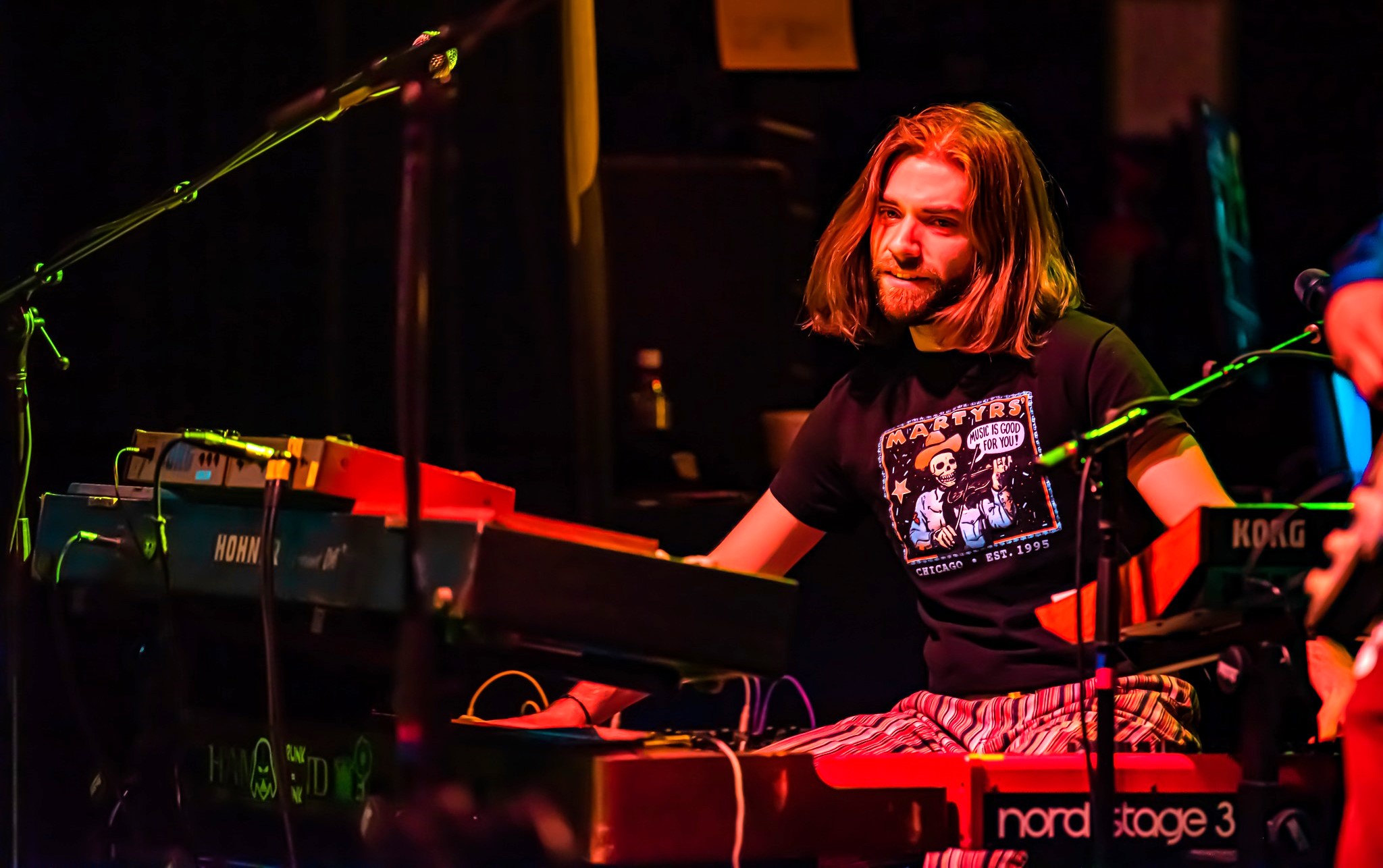
It's so interesting. Seeing the dynamics within the crowd. The way energy shifts throughout it. Really bizarre. Seeing security guards go up to people to tell them to stop vaping or whatever, and then seeing how that ripples in a little area. There's now a containment zone of harshed mellow. It’s like fluid dynamics. It's crazy to watch that s*** go.
When I'm playing I try to get into that space. Where there's nothing happening up here [points to the top of his head]. There's no thought there. It’s just existing in the moment man. I'm not consciously paying attention to anything. A person like me, I like to be involved and aware of as much as I can. Being aware of the musicians on stage and seeing where everybody's head is at. I'm not good at it when I'm walking around being a regular person, but when I'm behind the instrument – I can look at somebody and give them the It's Always Sunny ocular pat down and know everything about them in that moment. It's easier with the people that I know well like the band. I look at them on stage at any moment and know exactly what's happening.
You can do that out in the crowd too. Like I said, you see these waves of things happening. It's pretty out, man. It's pretty out.
GW: What's it like playing 141 shows in a year like you did in 2023. How does the vigorous touring affect you? Have you observed any changes in your mindset as time has passed?
Jeremy Kaplan: I think I've gotten a little bit chiller. You learn to roll with the punches. There is relatively little you can do when bad things happen on the road. You're mobile so you don't have all the resources that you have built up in your geographical area over your whole life. Beyond being able to deal with that just on a personal emotional level – you also learn how to be more of a go-getter and say: alright, this is a problem that we have to fix and this is how we're going to fix it.
Historically I've been that way anyway, but to apply that now to a group of people that all need to get this job done – making decisions like that can be scary because you have a lot of people to think about. It's hardened me up for sure. Not that I needed it, but it's put hair on my chest.
It's a very different way of living. I really enjoy my home time, my alone time. I am mostly a solitary creature if it weren't for music driving me outside. It definitely changes a person.
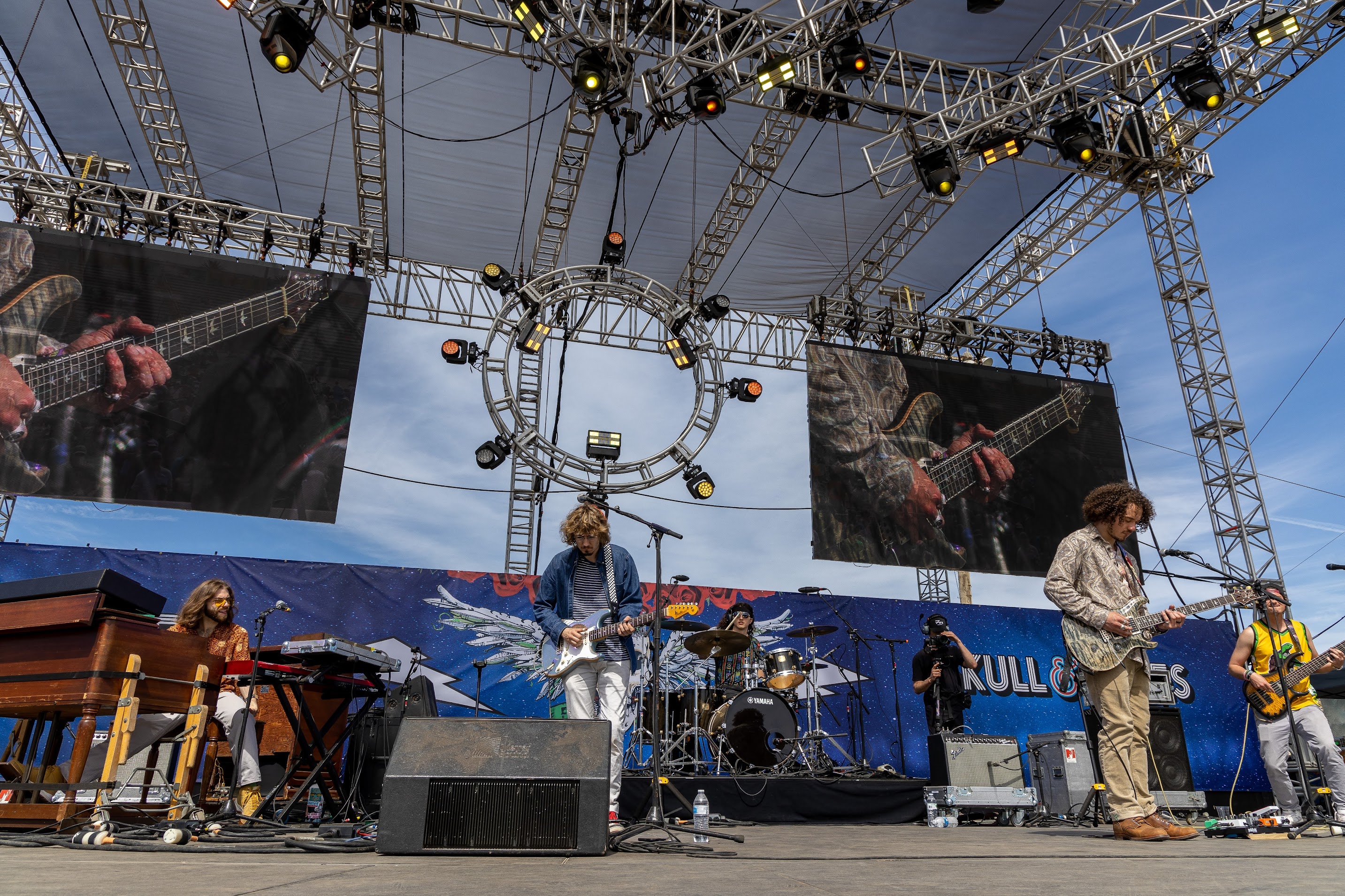
GW: An example of you touring intensely, you went to Michigan four separate times within the last year alone, which I thought is pretty crazy considering you had never played there before that.
Jeremy Kaplan: Yeah, I was thinking the same thing while we were doing it. Like hang on, this is wild.
GW: Did you have any state, city, or region that surprised you with how much you enjoyed it? A place you’re looking forward to going back to.
Jeremy Kaplan: I have to say I was surprised with this DC show on the [January] 19th. We sold it out almost a week in advance. I guess we've been shoring up the area for a while. Between the two Ramble Festivals that we've done and the one DC show in 2022. But to sell out that room was very surprising. To briefly relate this to the previous point, it's really cool how you build up this thing in different areas and then you start to develop that network of people in that area. People who are going to help you solve problems when they come up.
We were in Vermont recently and our van and trailer were stuck in an iced over driveway. We got a guy to pull us out and now that's part of our network. Just like when we were in Upstate New York, and we found this guy that does roadside trailer stuff. So when our trailer’s tire literally popped off in the middle of the New York State Thruway, we got in touch with him and we're able to get going. To build up that network and meet amazing people that are doing unique things. There's nobody that has a roadside trailer business – that doesn't exist. This one guy does and somehow we got in contact with him. It's just amazing what you'll learn and who you'll meet.
GW: So maybe we can consider someone like that an honorary member of the “Dog Pound”. What does the Dog Pound mean to you?
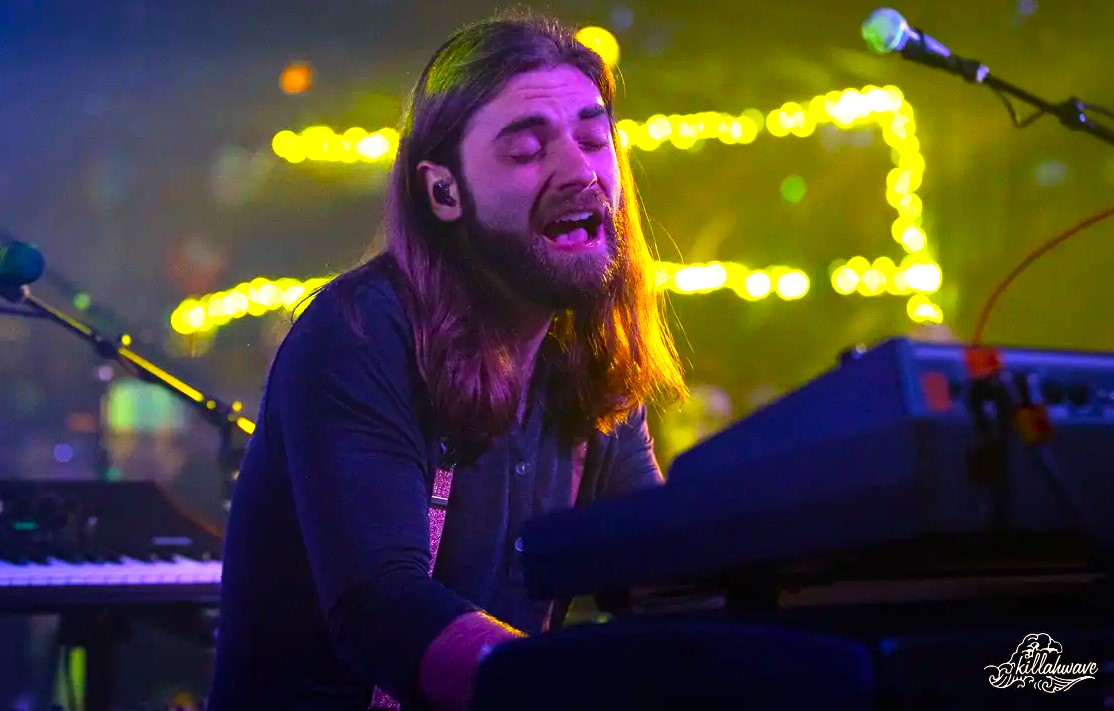
Jeremy Kaplan: The amazing group of people that will travel long distances to catch the band and these people have all become family to us, which is even crazier.
It's people like Casey [McCarthy], who met us once and was like: I just like this and I want to be involved in whatever way I can. People like Jon and Heather Maruca, they've run the merch table for us on many gigs when we were short staffed. It's a group of well-doers that want to be involved with something a little bit bigger than just themselves. Which is incredibly cool.
GW: The band recently covered “I’m Just a Bill” by Schoolhouse Rock! You led the vocal effort. Do you enjoy playing songs that cater to the local crowd? Songs that allow you and the band to show your spontaneity and playful side?
Jeremy Kaplan: Oh yes, especially if we can get theatrical with it. I spoke before about my theatrical background and I love it. There's something that goes beyond the music show. That's making it more engaging, exciting, and unique for the crowd.
When we get to do things like that, I'm super excited. I always get tossed the wacky stuff and it's funny because I had brought that tune up a long time ago. We were listening to it in the van as recently as four or five months ago. It's lucky that the right time and place came around that we could do it. I'm always pushing for really out tunes and most of the time my calls go unheeded, but every now and again I sneak one past. It wasn't actually me that suggested it for that gig, but I was stoked when we decided on it.
GW: Any other locally-charged covers that you’ve enjoyed playing recently?
Jeremy Kaplan: The thing about it is that it never goes wrong. You could really butcher it, but people still love it. [laughs] I'm reminded of two occasions. The older one would be doing “Drain You” by Nirvana in Seattle. That was stupid fun. More recently, we did the Bruce Springsteen tune [“Born to Run”] at The Stone Pony. That was actually a redemption because we did it at Sea.Hear.Now Festival in 2022 and it went over really well, but we did not play it as well as we could have. We crushed it at The Pony though. [laughs]
GW: What can the Dog Pound expect from the band in 2024?
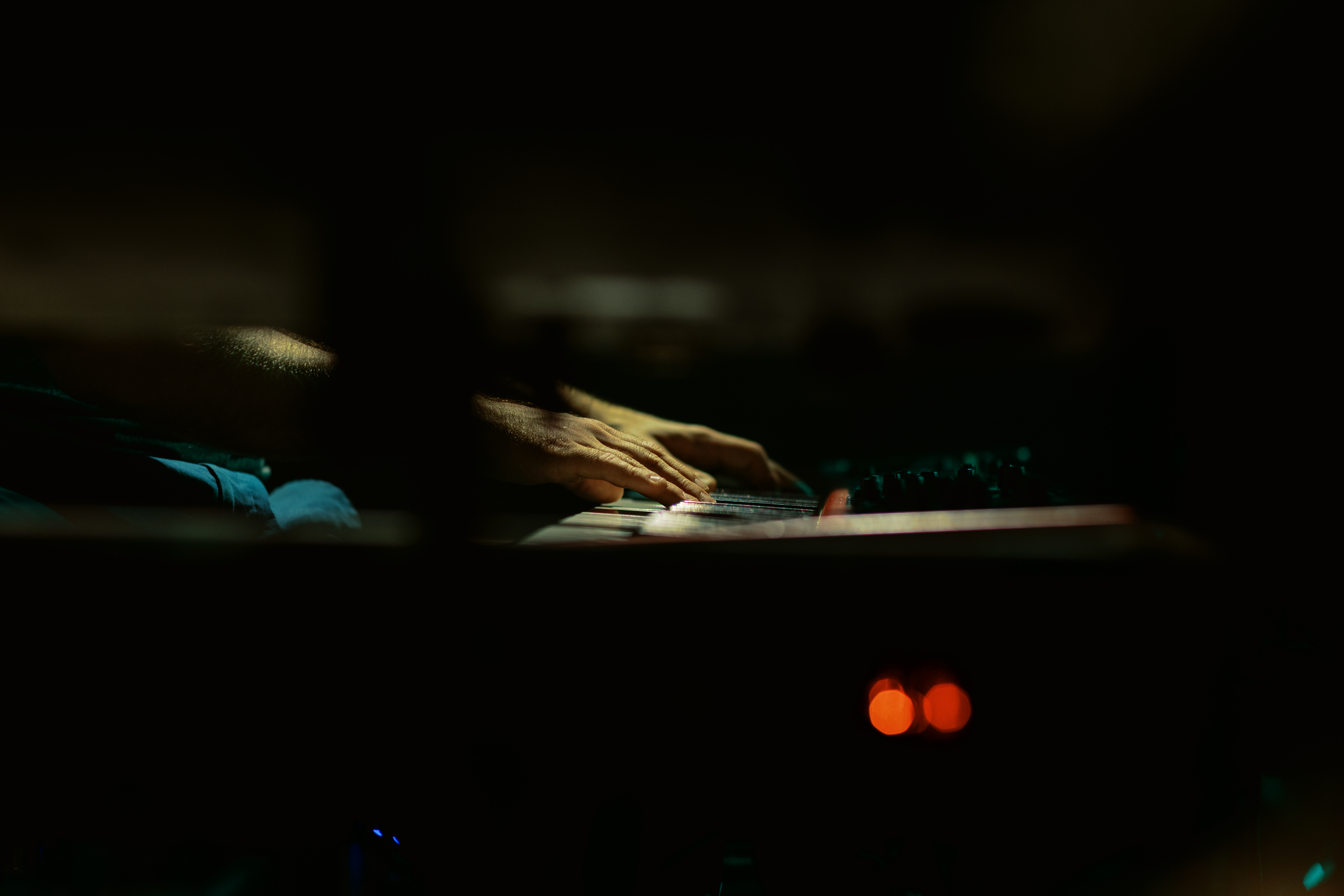
Jeremy Kaplan: There's a ton of great gigs on the way. Really exciting. That’s all I can say about that.
A new record. Lots of new songs. Stretching ourselves musically in new ways with the addition of new equipment and ideas. ‘24 should be good. We're not working as hard so we'll be a little bit more relaxed.
Dogs In A Pile are an eclectic five-piece band hailing from Asbury Park, New Jersey. The members include Jimmy Law (guitarist), Brian Murray (guitarist), Sam Lucid (bass), Jeremy Kaplan (keyboardist), and Joe Babick (drums).
Ready to join The Dog Pound? Head over to dogsinapileofficial.com for their latest soundboards, tour dates, setlists, merch, and much more… and stay tuned for Joe and Jimmy’s interviews!






